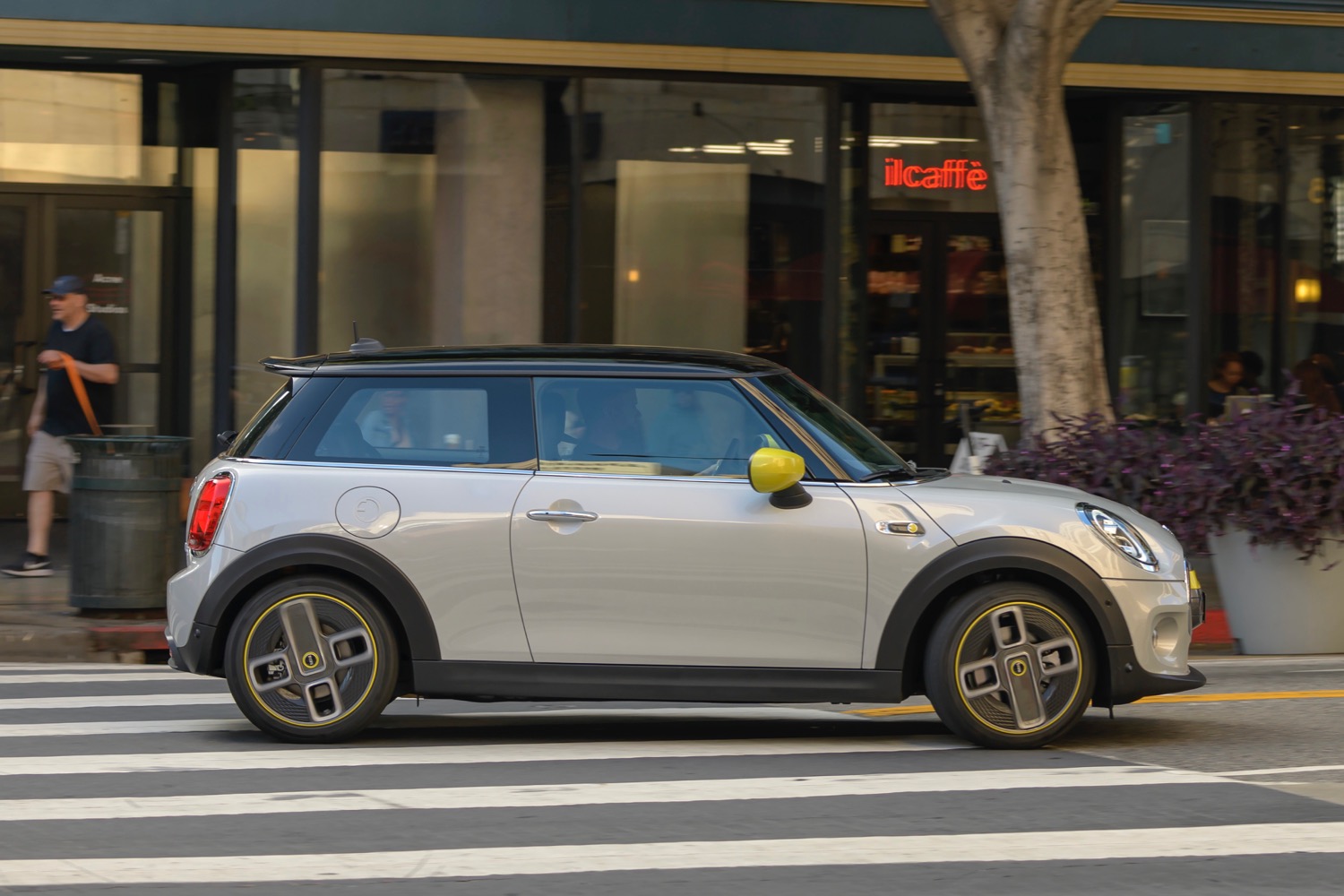
The 2020 Mini Cooper SE, the brand’s first mass-market electric car, now has an official price and United States launch date. The electric Mini will arrive in dealerships in March 2020 with a base price of $30,750 (including a mandatory $850 destination charge). Mini said the car will be sold “across the U.S.,” implying that sales won’t be restricted to certain states, as is the case with some other automakers’ electric cars.
Pricing is a bit of a step up from a base Mini Cooper Hardtop 2 Door, which starts at $24,250, but is pretty close to the $28,250 base price of the Cooper S, which has a similar power output to the electric Mini. The Cooper SE is by no means the most expensive Mini. The John Cooper Works performance model starts at $34,250, and other body styles can reach higher than that.
When it goes on sale, the Cooper SE will likely qualify for the full $7,500 federal electric car tax credit. Mini parent BMW hasn’t reached the 2,000-unit limit that triggers a phaseout of the credit. That drops the Mini’s base price to $23,250. Mini even claims that state and local incentives will lower the price to $17,900 in some areas, although it didn’t specify where.
The Cooper SE is priced to undercut the Chevrolet Bolt EV, Hyundai Kona Electric, and Tesla Model 3, and virtually match the base Nissan Leaf. However, the Mini will likely offer less range than many competitors. Mini estimates a range of 146 miles to 168 miles on the European testing cycle. Results from the stricter U.S. testing cycle will likely be on the lower end of that estimate. The Chevy, Hyundai, and Tesla all have more than 200 miles of range, as does the Nissan Leaf Plus, which sports a larger battery pack than the base model. The Mini’s range could match the base Leaf’s 150 miles, but the Nissan still has more passenger and cargo space.
Mini equipped the Cooper SE with an electric motor making 181 horsepower and 199 pound-feet of torque, which is sent to the front wheels. The electric car will do zero to 60 mph in 6.9 seconds, with a top speed of 93 mph, according to Mini. A full recharge of the 32.6-kilowatt-hour battery pack will take four hours from a 240-volt Level 2 AC source, Mini estimates. The Cooper SE is also equipped for DC fast charging using the Combined Charging Standard (CCS), allowing for an 80-percent charge in 35 minutes, according to Mini.
Standard equipment includes a 6.5-inch touchscreen with Apple CarPlay compatibility (no Android Auto), LED headlights, forward collision warning, heated front seats, a leather-wrapped steering wheel, and leatherette upholstery.
Editors' Recommendations
- Starting under $40K, Volvo’s compact EX30 will be its most affordable EV, and its fastest
- Watch as Sony starts to test its Vision-S electric car on European roads
- Rivian won’t start delivering its electric pickup truck until 2021
- More states will levy extra registration fees on electric car owners in 2020
- Mini begins taking orders for the all-electric 2020 Cooper SE


